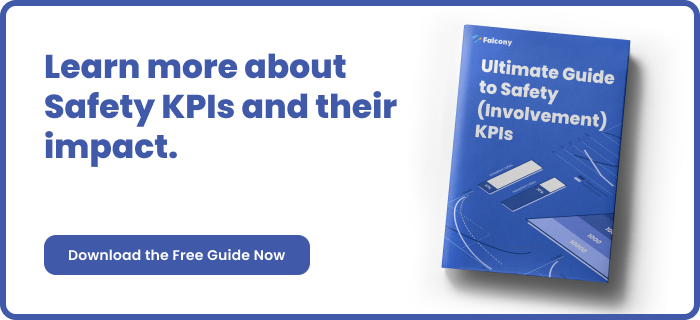9 Typical Unsafe Conditions in Logistics Facilities
Logistics facilities, ranging from warehouses to distribution centres, are the backbone of modern supply chains. While they play a crucial role in ensuring the seamless movement of goods, these environments can also present various safety risks. Unsafe conditions within these facilities can lead to injuries, damage to goods, and even disrupt entire supply chain operations. Identifying and addressing these hazards is paramount to creating a safe working environment.
In this blog, we explore nine common unsafe conditions found in logistics facilities and the importance of proactively addressing them.
Slips, Trips, and Falls
One of the most frequent causes of injury in logistics facilities is slips, trips, and falls. These accidents can be caused by wet or uneven floors, cluttered walkways, or improperly stored materials. In an environment where workers are constantly moving, ensuring clear, dry, and well-maintained floors is essential. The use of non-slip mats and proper housekeeping can significantly reduce the risk of these accidents.
Improperly Stored Goods
Storing goods improperly is a prevalent issue in many logistics facilities. Items that are stacked too high or not secured correctly can lead to dangerous situations, particularly if they fall onto workers or cause blockages in aisles. Proper shelving, racking systems, and regular safety checks are necessary to prevent this risk. Additionally, ensuring that heavier items are stored lower down and that products are appropriately labelled for easy identification can help prevent accidents.
Faulty Equipment
The use of poorly maintained or outdated equipment is another significant hazard. Forklifts, pallet jacks, and conveyor belts are essential tools in logistics, but they can pose serious risks if not properly maintained. Regular inspection, maintenance, and training on the correct usage of equipment are vital to prevent malfunction-related accidents. Workers should also be encouraged to report any issues immediately, ensuring swift intervention before a potential hazard develops.
Poor Lighting
Insufficient lighting is a common issue in warehouses and logistics facilities, where workers often need to navigate large spaces filled with goods. Inadequate lighting can cause accidents by reducing visibility and increasing the likelihood of workers tripping or failing to see potential hazards. Ensuring proper illumination in both common and more isolated areas, such as storage racks and walkways, is crucial for maintaining safety.
Inadequate Personal Protective Equipment (PPE)
Personal Protective Equipment (PPE) plays a vital role in safeguarding workers in logistics environments. However, the lack of adequate PPE or improper use of safety gear can expose workers to preventable hazards. High-visibility clothing, safety boots, hard hats, and gloves should be provided based on the specific tasks being performed. Regular training and monitoring are essential to ensure compliance with PPE guidelines.
Overloaded or Inadequate Racking Systems
Logistics facilities often rely on racking systems to store products, but these can become dangerous if they are overloaded or improperly installed. Overloaded racking systems can collapse under the weight of the goods stored, causing injury or damage. Regular inspections of racking systems, proper load distribution, and adherence to manufacturer guidelines are essential practices for ensuring the safety of workers and the security of goods.
Unclear Emergency Exits
In case of a fire, chemical spill, or any other emergency, workers must have easy access to clearly marked emergency exits. Blocked or poorly marked exits can delay evacuations and increase the risk of injury during an emergency situation. Logistics facilities must have well-planned evacuation routes, regular drills, and clear signage to ensure that everyone knows where to go in case of an emergency.
Improper Handling of Hazardous Materials
Handling hazardous materials such as chemicals, flammable substances, or toxic gases is an inherent risk in certain logistics operations. Without proper safety procedures, these materials can cause fires, explosions, or long-term health effects for employees. Ensuring proper training, safe storage, correct handling, and the availability of appropriate emergency response equipment (such as fire extinguishers and eye wash stations) are essential safety measures.
Vehicle and Pedestrian Interaction
The interaction between forklifts, trucks, and pedestrians within a logistics facility is one of the highest-risk areas for accidents. Often, there are no clear delineations between pedestrian walkways and vehicle lanes, increasing the likelihood of collisions. Implementing dedicated lanes for vehicles and pedestrians, along with appropriate signage and barriers, can significantly reduce the risk of accidents in busy environments.
Conclusion
Unsafe conditions in logistics facilities not only jeopardise the health and safety of workers but can also result in significant operational disruptions and legal ramifications for companies. Identifying and addressing these typical hazards is an ongoing process that involves regular training, consistent safety checks, and the proactive implementation of safety measures.
By fostering a culture of safety, investing in the right equipment, and ensuring compliance with health and safety regulations, logistics facilities can minimise the risk of accidents and create a safer, more efficient working environment for all employees.
Modern web applications have a lot of benefits when it comes to organising audits, inspections, assessments and checks in a clear and easy-to-understand way. Test our Falcony | Audit FREE for 30 days or Contact us for more information:
We are building the world's first operational involvement platform. Our mission is to make the process of finding, sharing, fixing and learning from issues and observations as easy as thinking about them and as rewarding as being remembered for them.
By doing this, we are making work more meaningful for all parties involved.
More information at falcony.io.

Related posts
15 Most Common Safety Incidents in Warehousing and Distribution
The warehousing and distribution industry plays a vital role in the global supply chain, ensuring...
15 Types of Safety Incidents in Logistics and Transportation
In the logistics and transportation industry, safety is paramount. The sector involves the movement...
9 Common Safety Risks in Waste Management and Recycling
Waste management and recycling are critical to maintaining a sustainable environment, but the...







